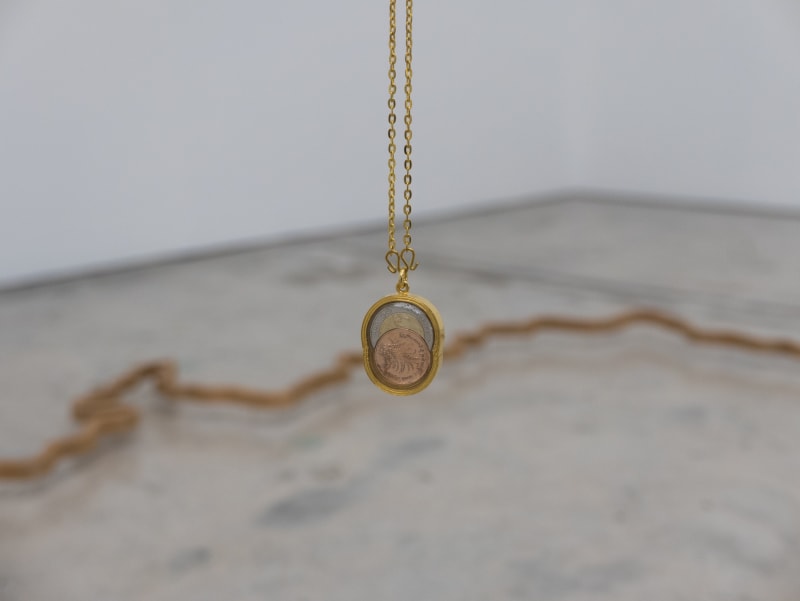“Neither Body nor Soul” was Nipan Oranniwesna’s first solo exhibition in his home country in six years. One of the most prominent Thai artists of his generation, Oranniwesna is appreciated for his minimal, ephemeral, and contemplative installations, which evoke the concepts of home, belonging, and displacement. His oeuvre is remarkably consistent and unmistakably distilled, but the quietness and subtlety of his work occasionally (and perhaps deliberately) obscure and undermine its political dimension. Since the mid-2000s, the artist has been working with city maps, traditional songs, and historical imagery to challenge the idea of nationalism. As Thailand’s political situation has deteriorated into chaos and violence since 2008, and especially since 2015 (a year after the country’s most recent coup d’état, executed by the oppressive military junta still in power today), the political content in Oranniwesna’s art has become all the more urgent.
This show traced the artist’s travels to the border between Thailand and Myanmar, his intimate journey into the lives of immigrants from Myanmar, and his examination of himself both as a Thai citizen and as an individual, through artifacts and found objects carefully placed throughout the gallery space. Included were six wooden sculptural pieces in the meandering shape of Thailand’s geographical borders with neighboring countries (Neither Body nor Soul; all works 2018); Thai and Myanmar coins glued together and encased in golden amulet pendants (Lunar Eclipse); an empty glass pedestal next to two empty pill capsules, one filled with gold and the other containing ground-up coins from Thailand and bordering countries, alongside a tied-together, painted stack of cardboard (Monument); and a large sheet of paper embellished with gold leaf, the enlargement of a slip on which someone in Myanmar had written down her phone number (Calling from the Other Side).
Oranniwesna is a perfectionist who seeks to endow each and every piece with intricate meanings and hidden messages. Where the show became more contentious and radical was in the theme—revealed above all via the juxtaposition of works—that wove everything together: the issue of sovereign power and the nation-state. By deconstructing symbols of sovereignty—breaking the borderline of the nation, portraying an empty monument, hollowing out and pulverizing coins—the artist attempts to subvert the all-pervasive power of the sovereign as such.
The absence of any directly and instantly discernible image of sovereignty in the show made the criticism more poignant, as it conveyed the elusive nature of the ruler’s omnipresent power over the nation and his subjects. But these omissions were also practical: Thailand is one of a few countries still rigorously enforcing the law of lèse-majesté, which forbids anything that can be construed as defaming the sovereign. In Thailand’s precarious climate of intense censorship and self-censorship, communicating through complex symbols and codes might be the only safe way to elucidate politically sensitive issues. Oranniwesna’s art, with its spirit of quiet resistance—it is not confrontational, nor does it easily yield its message—works like an enigmatic riddle, a sphinxlike conundrum that will reveal itself only to the right audience.


